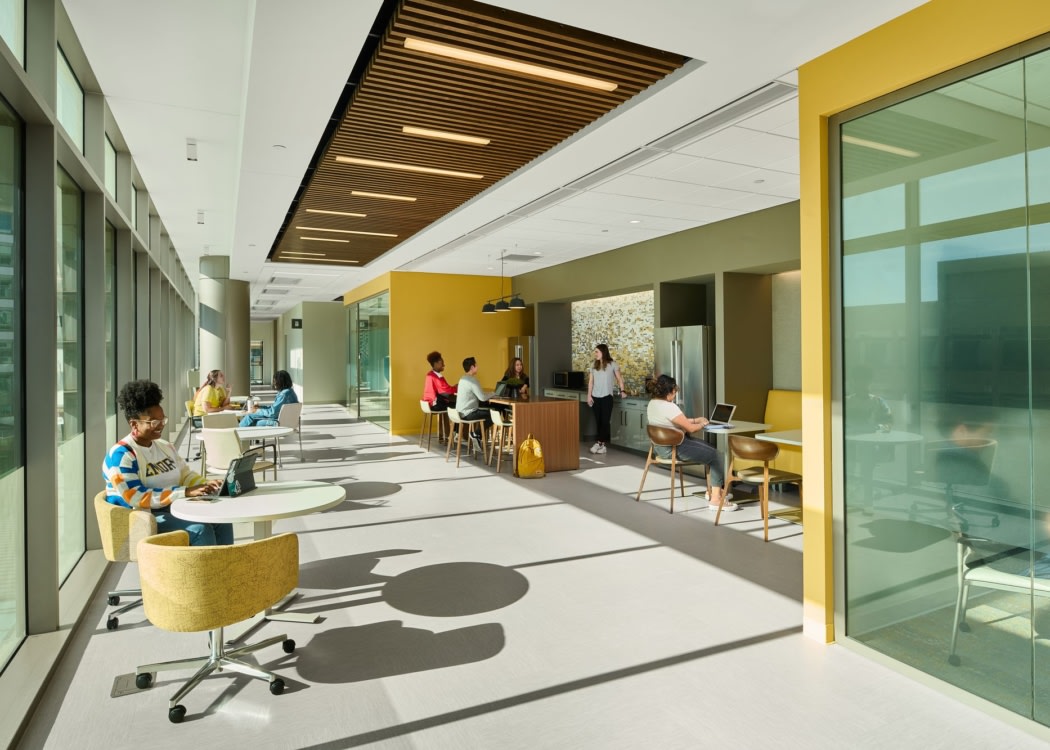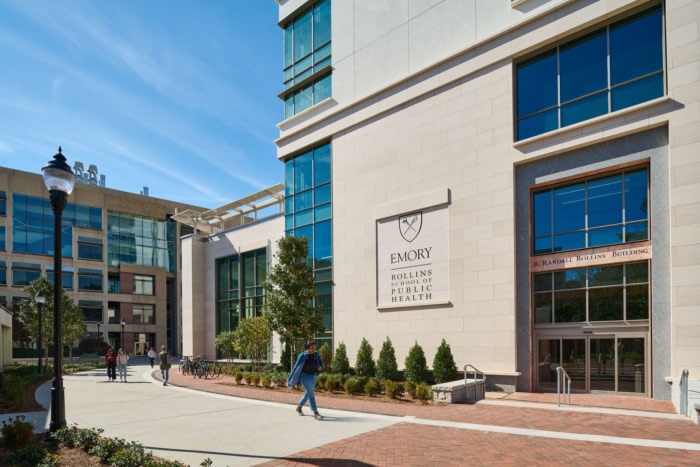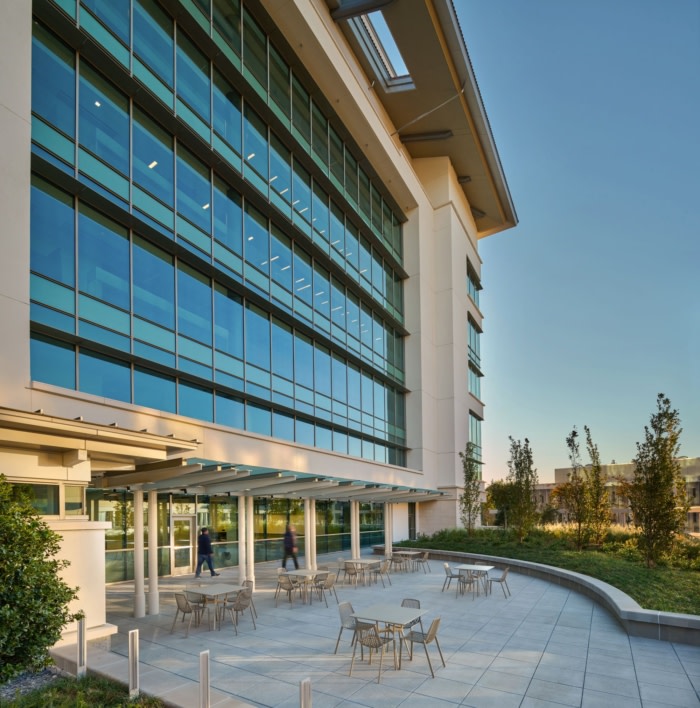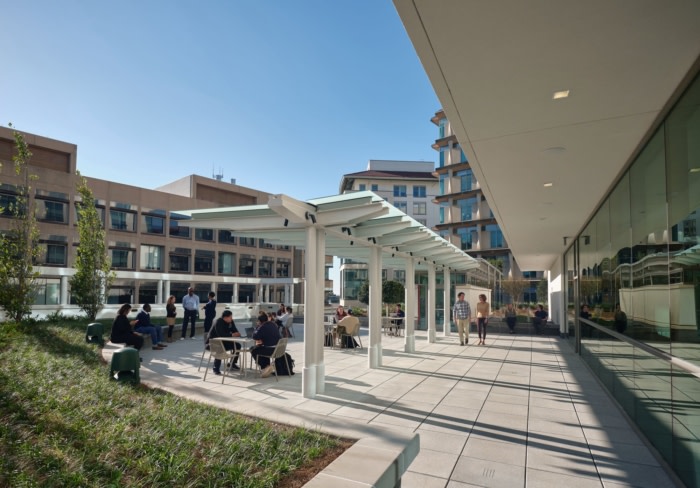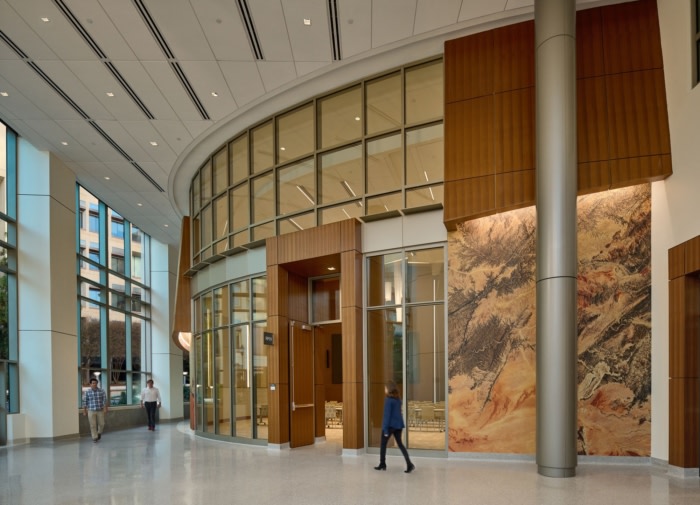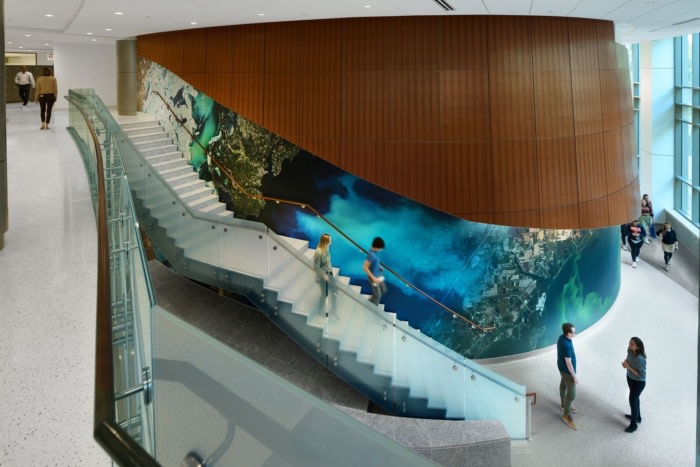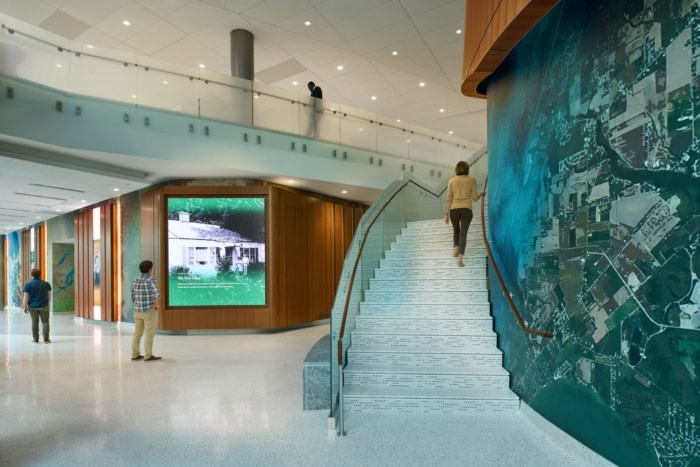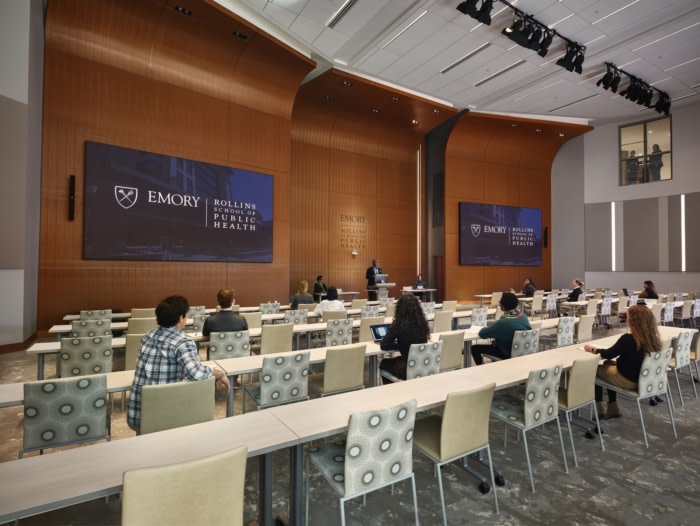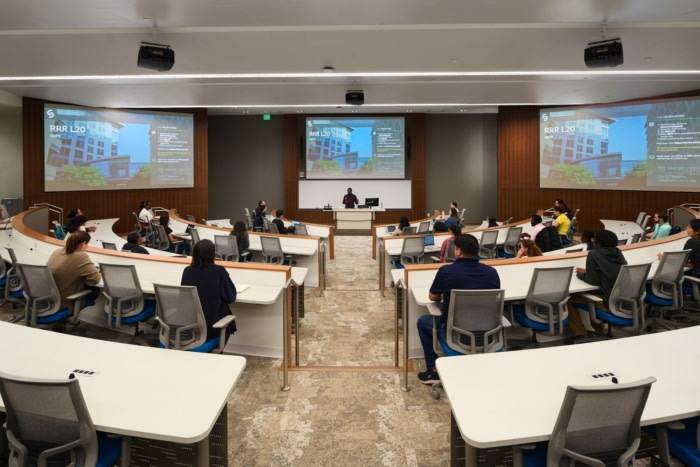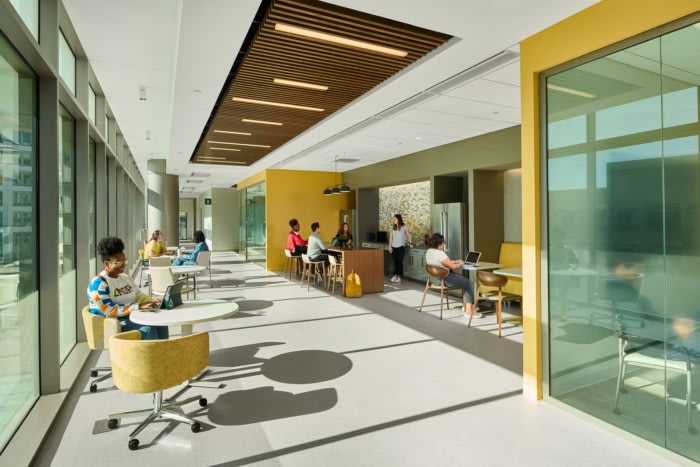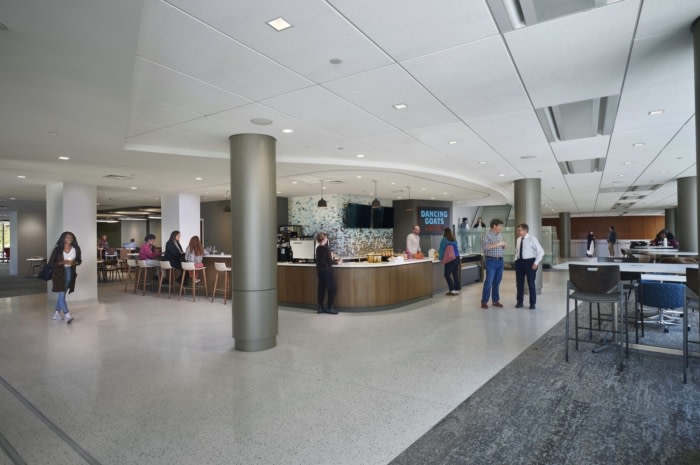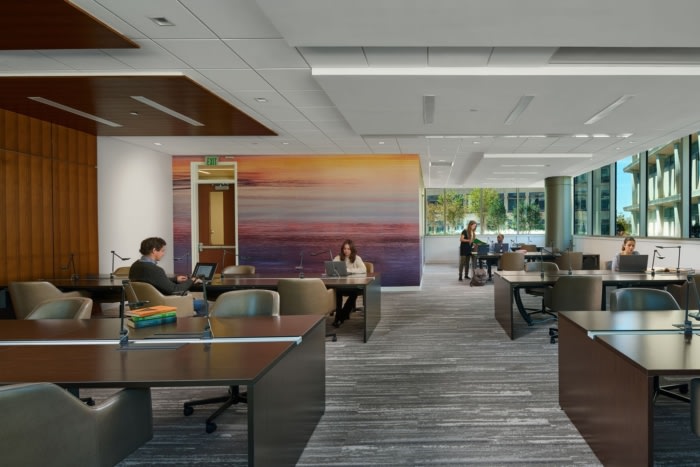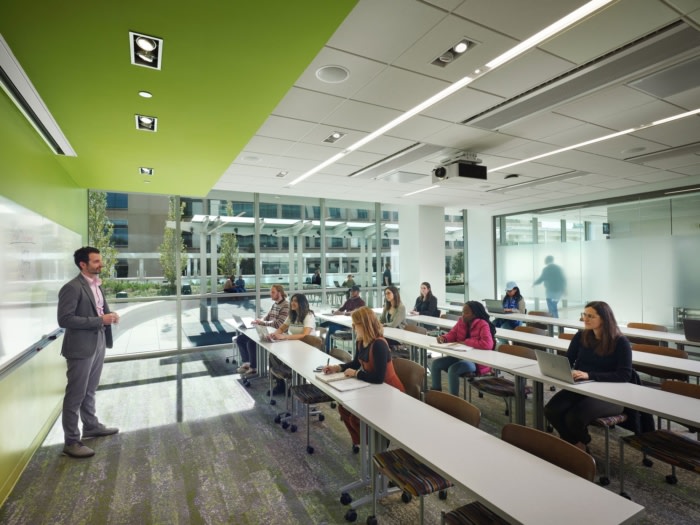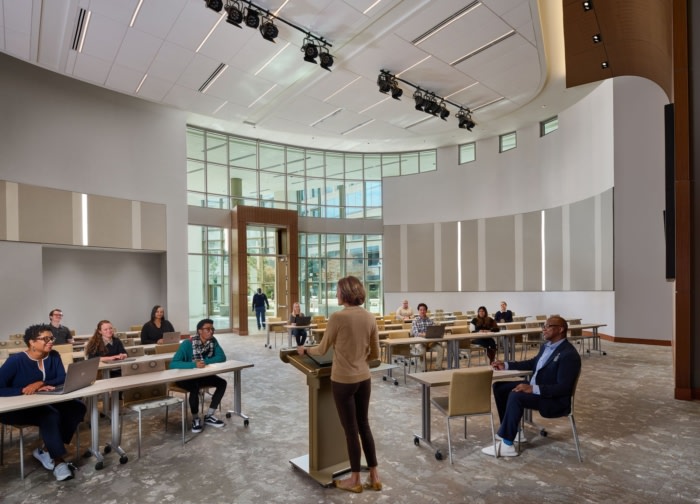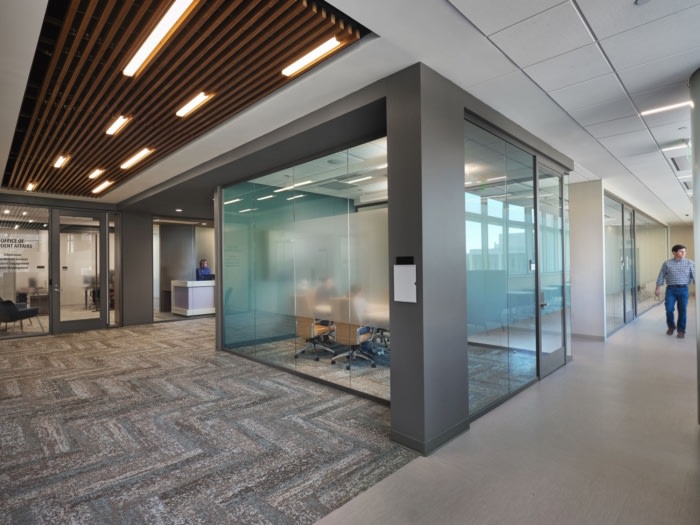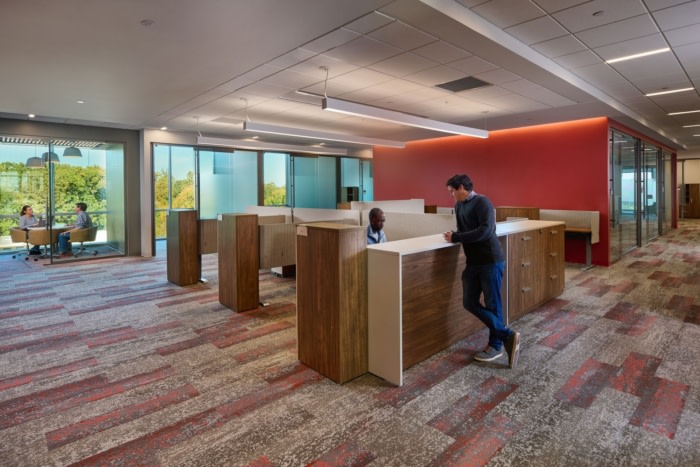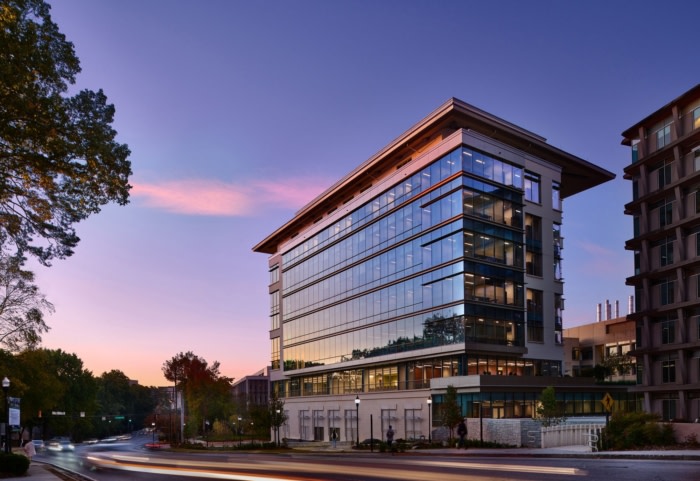Emory University – R. Randall Rollins Building
The S/L/A/M Collaborative completed the R. Randall Rollins Building as a dynamic space for Emory University in Atlanta, University.
SLAM designed the newest building at Emory University’s Rollins School of Public Health as a 21st century paradigm of study and celebration. Its design incorporates abundant options for collaboration and social interaction along with hospitality spaces for training and events to present and celebrate innovation.
The R. Randall Rollins Building was constructed during the pandemic, underlining the significance of the school’s role to educate students and advance research to address the critical public health issues facing the world. The building leverages the school’s long-held relationships with the Centers for Disease Control and Prevention — headquartered less than a block away — and other nearby institutions, including the Carter Center and the American Cancer Society.
The proximity of the Rollins School to the CDC facilitates the flow of resources and ideas that keep the institutions intrinsically linked. CDC experts account for nearly half of Rollins’ adjunct faculty — and the school sends the latest scientific discoveries as well as interns and newly trained graduates to the CDC.
Breakthrough research has been presented in a ground-floor multi-function hall and an event space at the top of the building with views of the iconic Atlanta skyline hosts celebratory events with members of the industry and campus community.
Students make use of the flexible furnishings in light-filled active-learning classrooms to create lounge environments outside of scheduled classroom use.
SLAM’s design puts social spaces front and center. Along the interior permitter of each floor, spaces filled with light are dedicated to collaboration and are available to everyone on campus. This design initiative, referred to as the “social edge,” is meant to break the traditional bounds of silo-based learning.
As students, faculty and visitors enter the facility, they are greeted with NASA satellite imagery of the earth, signifying the school’s mission to improve public health globally. As they walk through a main corridor, a series of digital displays and motion-triggered lighting sequences are used as storytelling tools, showcasing the school’s work and the legacy of its main benefactor, the Rollins family. This kinetic visual experience, which is meant to draw people’s eyes up and away from their phones, is ever-changing and can be used to celebrate events that relate indirectly to the school’s public health work, such as Pride and Breast Cancer Awareness month.
The building sits in an area known as the Emory Forest and SLAM took a nature-friendly approach to the design, incorporating specialized frit patterns on the glass to mitigate bird strikes. The fritted glass also helps reduce solar heat gain, which helped the building achieve LEED Gold certification.
Design: The S/L/A/M Collaborative
Design Team: Lynn Cain, Frederick Godbolt, Sidney P. Ward
Interactive Lighting Design: ZEBRADOG
Photography: Galina Juliana

